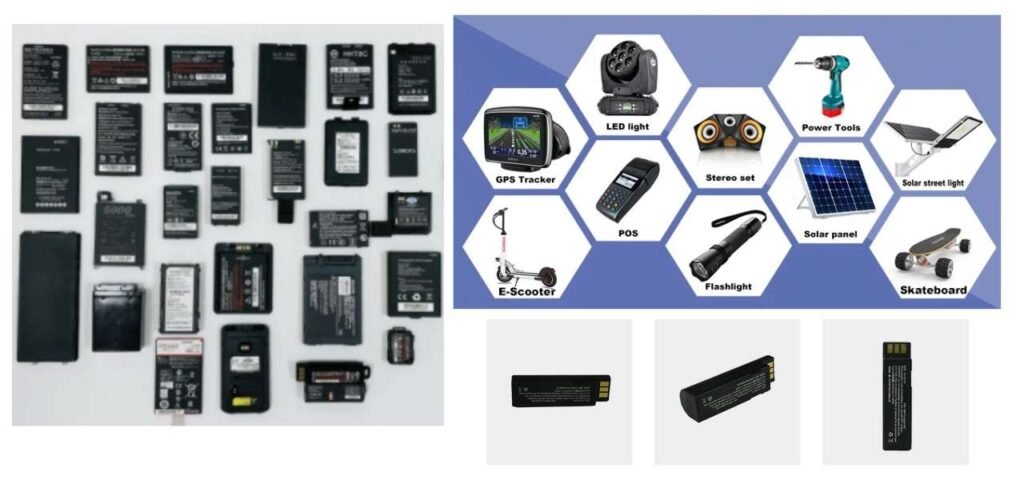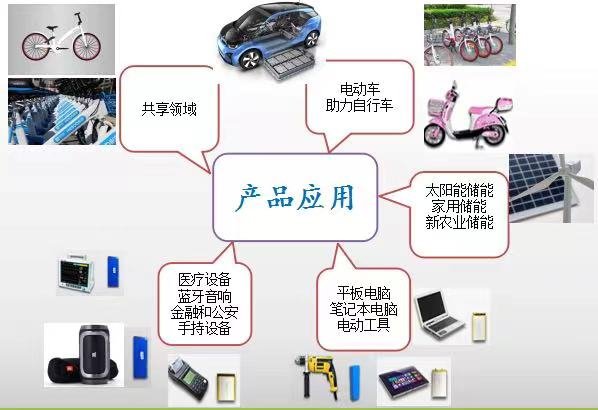Lithium-Polymer-Akkus (LiPo) sind entscheidend für den Betrieb von Hochleistungsgeräten wie Drohnen, RC-Autos, Elektrofahrrädern und vielem mehr. Das richtige Aufladen dieser Batterien ist jedoch entscheidend, um Langlebigkeit, Sicherheit und optimale Leistung zu gewährleisten. In diesem Artikel werden wir uns eingehend mit folgenden Themen befassen LiPo-Akku-LadegeräteSie erfahren, welche Eigenschaften und Funktionen sie haben und wie Sie das beste Ladegerät für Ihre Bedürfnisse auswählen. Egal, ob Sie ein Anfänger oder ein Experte sind, dieser umfassende Leitfaden enthält alles, was Sie wissen müssen.

Was sind Lithium-Polymer-Batterien, und warum brauchen sie spezielle Ladegeräte?
Lithium-Polymer-Akkus (LiPo) sind leichte Batterien mit hoher Energiedichte, die häufig in Anwendungen eingesetzt werden, die leistungsstarke, kompakte Energiequellen erfordern. Im Gegensatz zu anderen Batterietypen, wie Nickel-Metallhydrid- (NiMH) oder Blei-Säure-Batterien, haben LiPo-Batterien besondere Ladeanforderungen.
LiPo-Akkus bestehen aus einzelnen Zellen, die jeweils eine Nennspannung von 3.7V und einer maximalen Spannung von 4,2 V bei vollständiger Aufladung. Das Über- oder Unterladen eines LiPo-Akkus kann zu Sicherheitsrisiken wie Überhitzung, Anschwellen oder sogar Bränden führen. Aus diesem Grund sind spezialisierte LiPo-Akku-Ladegeräte sind dafür ausgelegt, die Spannung zu regulieren, die Zellen auszugleichen und die Ladeleistung zu optimieren.
Hauptmerkmale von LiPo-Akku-Ladegeräten
Ein hochwertiges LiPo-Ladegerät muss mehrere wichtige Aufgaben erfüllen:
- Ausgleichsladung: Stellt sicher, dass alle Zellen in einem mehrzelligen Akkupack gleichmäßig geladen werden, um eine Über- oder Unterladung zu vermeiden.
- Spannungsregelung: Hält die Spannung innerhalb sicherer Grenzen (3,7 V bis 4,2 V pro Zelle).
- Aufladungsmodi: Bietet verschiedene Modi wie Schnellladung, Gleichgewichtsladung und Speicherladung, um verschiedenen Anforderungen gerecht zu werden.
Wenn Sie ein spezielles Ladegerät verwenden, schützen Sie nicht nur Ihren Akku, sondern verlängern auch seine Lebensdauer und sorgen für eine maximale Nutzung Ihrer Geräte.
Wie man das beste Lithium-Polymer-Akku-Ladegerät auswählt
Die Wahl des richtigen Ladegeräts für Ihre LiPo-Akkus hängt von mehreren Faktoren ab, darunter die Spezifikationen Ihres Akkus, die beabsichtigte Verwendung und Ihr Budget. Hier ist eine detaillierte Aufschlüsselung, was zu beachten ist:
1. Kompatibilität der Batteriezellenzahl
LiPo-Akkus sind in folgenden Konfigurationen erhältlich 1S (3,7V), 2S (7,4V), 3S (11.1V)und darüber hinaus. Ihr Ladegerät muss die spezifische Zellenzahl Ihres Akkus unterstützen.
Wenn Sie zum Beispiel eine 3S LiPo-AkkuVergewissern Sie sich, dass das Ladegerät 3S-Konfigurationen verarbeiten kann. Viele moderne Ladegeräte unterstützen eine breite Palette von Zellenzahlen, typischerweise von 1S bis 6S oder sogar höher.
2. Ladestrom und Ausgangsleistung
Der Ladestrom, gemessen in Ampere (A), bestimmt, wie schnell Ihr Akku geladen wird. Der ideale Ladestrom für einen LiPo-Akku ist im Allgemeinen 1C, wobei C ist die Kapazität der Batterie in Amperestunden (Ah). Zum Beispiel:
- Ein 2200-mAh-Akku (2,2Ah) sollte geladen werden bei 2.2A für eine sichere und effiziente Ladung.
Die Leistungsabgabe des Ladegeräts, gemessen in Watt (W), ist ein weiterer kritischer Faktor. Zur Berechnung der erforderlichen Wattzahl multiplizieren Sie die Batteriespannung mit dem Ladestrom. Zum Beispiel:
- Das Laden eines 3S LiPo (11.1V) bei 2.2A erfordert ein Ladegerät mit mindestens 24.4W Ausgang (11,1V x 2,2A).
3. Lademodi
Die besten LiPo-Ladegeräte bieten mehrere Lademodi, um den unterschiedlichen Anforderungen gerecht zu werden:
- Balance Charging: Gleicht einzelne Zellen aus, um gleichmäßige Spannungsniveaus zu gewährleisten.
- Speichern und Aufladen: Bringt die Batterie auf eine sichere Speicherspannung (in der Regel 3,8 V pro Zelle), um eine Verschlechterung während der Langzeitlagerung zu verhindern.
- Schnelles Aufladen: Beschleunigt den Ladevorgang, überspringt aber möglicherweise den Ausgleich.
- Entladungsmodus: Reduziert die Batteriespannung sicher, wenn sie für die Lagerung zu hoch ist.
4. Sicherheitsmerkmale
Bei der Auswahl eines LiPo-Ladegeräts sollte die Sicherheit oberste Priorität haben. Achten Sie auf Eigenschaften wie:
- Schutz vor Überladung: Verhindert, dass die Zellen 4,2 V überschreiten.
- Überwachung der Temperatur: Warnt Sie, wenn der Akku oder das Ladegerät überhitzt.
- Kurzschlussschutz: Verhindert Schäden im Falle von Verdrahtungsproblemen.
5. Ruf der Marke und Qualität
Die Investition in ein zuverlässiges Ladegerät von einem renommierten Hersteller ist von entscheidender Bedeutung. Guangdong Yungbang New Energy Co. Ltd. ist zum Beispiel eine vertrauenswürdige Quelle für kundenspezifische Lithium-Polymer-Batterien und Ladegeräte, die für ihre hohe Qualität und ihren außergewöhnlichen Kundenservice bekannt sind.
Die Wissenschaft hinter Balance Charging
Die Gleichgewichtsladung ist eine der wichtigsten Funktionen eines LiPo-Ladegeräts, insbesondere bei mehrzelligen Akkus. Hier ist, warum es wichtig ist:
Jede Zelle in einem LiPo-Akku hat einen leicht unterschiedlichen Innenwiderstand, was dazu führen kann, dass einige Zellen vor anderen fertig geladen sind. Ohne Gleichgewichtsladung kann das Überladen einer Zelle bei gleichzeitiger Unterladung einer anderen zu einer Überladung führen:
- Überhitzung: Überladene Zellen sind anfälliger für thermisches Durchgehen.
- Verkürzte Lebenserwartung: Ungleiche Zellspannungen verschlechtern mit der Zeit die Batterieleistung.
- Sicherheitsrisiken: Schwellungen, Undichtigkeiten oder sogar Brände.
Ein Balance-Ladegerät überwacht die Spannung jeder einzelnen Zelle und passt die Laderate an, um sicherzustellen, dass alle Zellen genau 4,2 V erreichen. Dies maximiert nicht nur die Lebensdauer der Batterie, sondern gewährleistet auch einen sicheren Betrieb.
Wie Sie Ihre LiPo-Akkus sicher aufladen
Das Aufladen von LiPo-Akkus erfordert die strikte Einhaltung von Sicherheitsprotokollen. Hier ist eine Schritt-für-Schritt-Anleitung, um sicheres und effizientes Laden zu gewährleisten:
Schritt 1: Verwenden Sie eine feuerfeste Ladetasche
Legen Sie den Akku immer in ein feuerfeste LiPo-Tasche während des Ladevorgangs. Dies minimiert das Risiko der Brandausbreitung im Falle einer Überhitzung oder eines Ausfalls.
Schritt 2: Konfigurieren Sie das Ladegerät
Stellen Sie Ihr Ladegerät auf die entsprechenden Einstellungen ein:
- Batterie-Typ: Wählen Sie den Modus "LiPo".
- Anzahl der Zellen: Vergewissern Sie sich, dass das Ladegerät die richtige Anzahl von Zellen erkennt.
- Gebührensatz: Stellen Sie den Ladestrom auf 1C ein, es sei denn, die Batterie gibt etwas anderes vor.
Schritt 3: Überwachung des Prozesses
Lassen Sie einen LiPo-Akku während des Ladens niemals unbeaufsichtigt. Überprüfen Sie regelmäßig die Spannungs- und Stromanzeige des Ladegeräts und fühlen Sie den Akku auf Anzeichen von Überhitzung.
Schritt 4: Verwenden Sie den Gleichgewichtslademodus
Verwenden Sie bei mehrzelligen Akkus immer eine Gleichgewichtsladung, um sicherzustellen, dass jede Zelle gleichmäßig geladen wird.
Schritt 5: An einem kühlen, trockenen Ort aufladen
Vermeiden Sie das Laden von LiPo-Akkus in direktem Sonnenlicht, in der Nähe von brennbaren Materialien oder in Umgebungen mit hoher Luftfeuchtigkeit.

Top Lithium-Polymer-Akku-Ladegeräte
Wenn Sie bereit sind, in ein hochwertiges Ladegerät zu investieren, finden Sie hier einige Top-Empfehlungen:
- ISDT Q6 Pro
- Kompakte Größe, 300W Ausgangsleistung, unterstützt 1-6S Batterien.
- Ideal für RC-Enthusiasten, die auf Tragbarkeit angewiesen sind.
- SkyRC iMAX B6AC V2
- AC/DC-Unterstützung, Ausgleichsladung und eine intuitive Benutzeroberfläche.
- Ideal für Anfänger und Bastler.
- Hitec RDX1 Pro
- Unterstützt bis zu 6S, 100W Leistung und Speichermodus.
- Perfekt für den Hausgebrauch.
- WerkzeugsatzRC M6D
- Zweikanal-Ladefunktion, 500 W Leistung und erweiterte Überwachungsfunktionen.
- Entwickelt für fortgeschrittene Benutzer.
- Venom Pro Duo
- Lädt zwei Batterien gleichzeitig, 80 W pro Kanal.
- Am besten für Benutzer mit mehreren Batterien.
Warum sollten Sie sich für Guangdong Yungbang New Energy Co. entscheiden?
Unter Guangdong Yungbang New Energy Co, Ltd.. sind wir stolz darauf, ein Quellenfabrik für LiPo-Akkus und 18650-Akkus. Unsere Produkte lassen sich an Ihre speziellen Bedürfnisse anpassen, und wir sind bestrebt, einen erstklassigen Kundenservice zu bieten. Ganz gleich, ob Sie einen Hochleistungsakku oder ein zuverlässiges Ladegerät benötigen, wir haben die Lösungen, um Ihre Geräte sicher und effizient zu betreiben.
Schlussfolgerung
Lithium-Polymer-Akku-Ladegeräte sind für die sichere Erhaltung der Leistung und Lebensdauer Ihrer LiPo-Akkus unerlässlich. Wenn Sie die Funktionen kennen, das richtige Modell auswählen und die richtigen Ladeverfahren anwenden, können Sie den Nutzen Ihrer Akkus maximieren und gleichzeitig die Sicherheit gewährleisten.
Wenn Sie hochwertige, anpassbare Lösungen benötigen, sollten Sie eine Zusammenarbeit mit Guangdong Yungbang New Energy Co. in Betracht ziehen. Wir sind spezialisiert auf die Bereitstellung von kundenspezifische Lithium-Polymer-Batterien und auf Ihre Bedürfnisse zugeschnittenes Zubehör.
FAQ
1. Wie lange dauert es, einen LiPo-Akku zu laden?
Die Ladedauer hängt von der Kapazität des Akkus und der Ladegeschwindigkeit ab. Ein 2200-mAh-Akku, der mit 1C (2,2A) geladen wird, benötigt beispielsweise etwa eine Stunde.
2. Kann ich ein normales Ladegerät für LiPo-Akkus verwenden?
Nein, es sollten nur spezielle LiPo-Ladegeräte verwendet werden, um Über- oder Unterladung sowie Sicherheitsrisiken zu vermeiden.
3. Was passiert, wenn ein LiPo-Akku überladen wird?
Eine Überladung kann dazu führen, dass der Akku anschwillt, sich überhitzt oder sogar Feuer fängt. Überwachen Sie Ihr Ladegerät immer und verwenden Sie die richtigen Einstellungen.
4. Wie sollte ich LiPo-Akkus lagern?
Lagern Sie LiPo-Akkus bei ihrer Speicherspannung (3,8 V pro Zelle) an einem kühlen, trockenen Ort. Verwenden Sie eine feuerfeste LiPo-Tasche für zusätzliche Sicherheit.
5. Kann Guangdong Yungbang New Energy Co., Ltd. Batterieladegeräte individuell gestalten?
Ja, wir bieten maßgeschneiderte Lösungen für Ihre spezifischen Anforderungen. Kontaktieren Sie uns, um mehr über unsere Produkte und Dienstleistungen zu erfahren.
